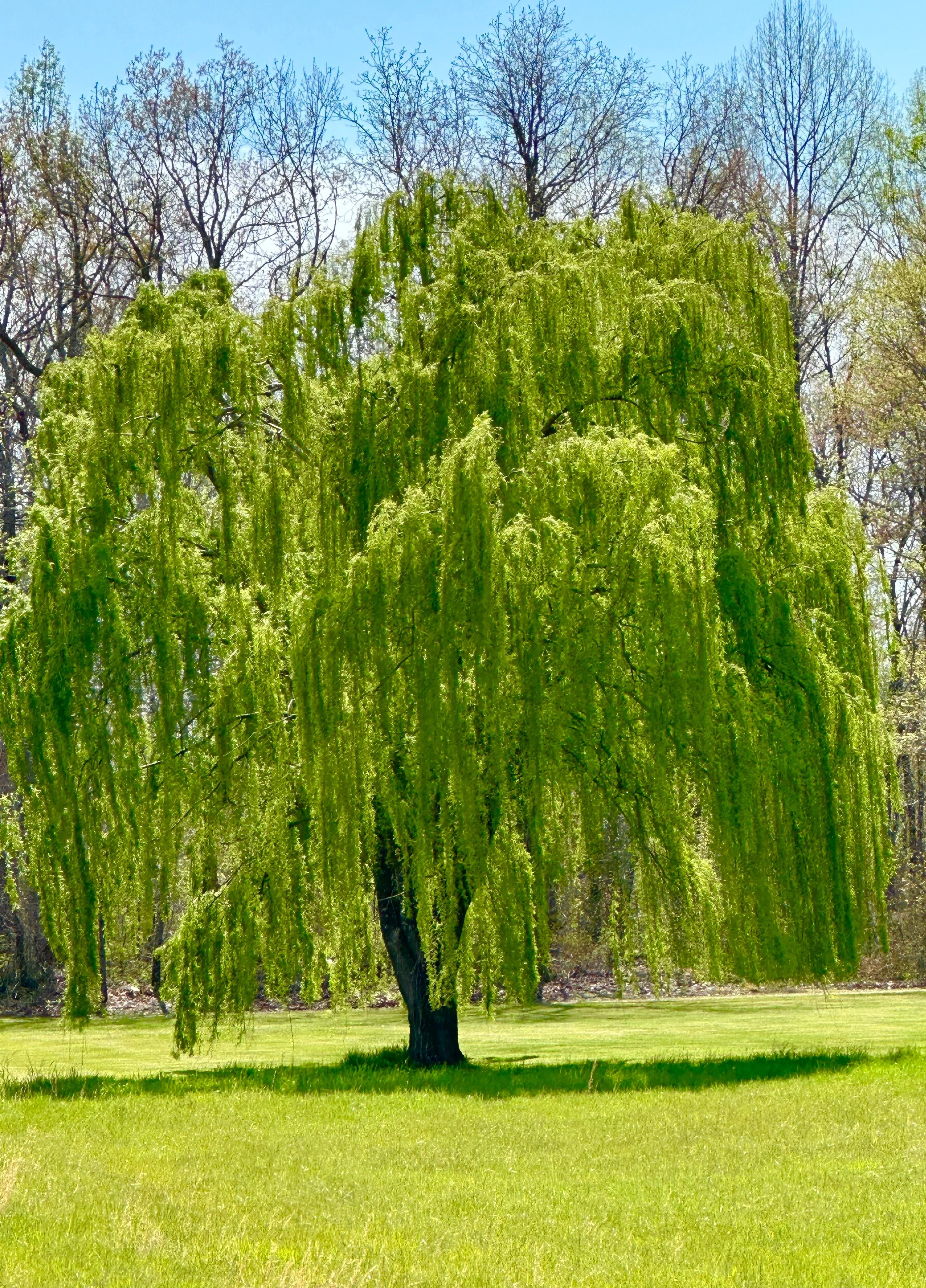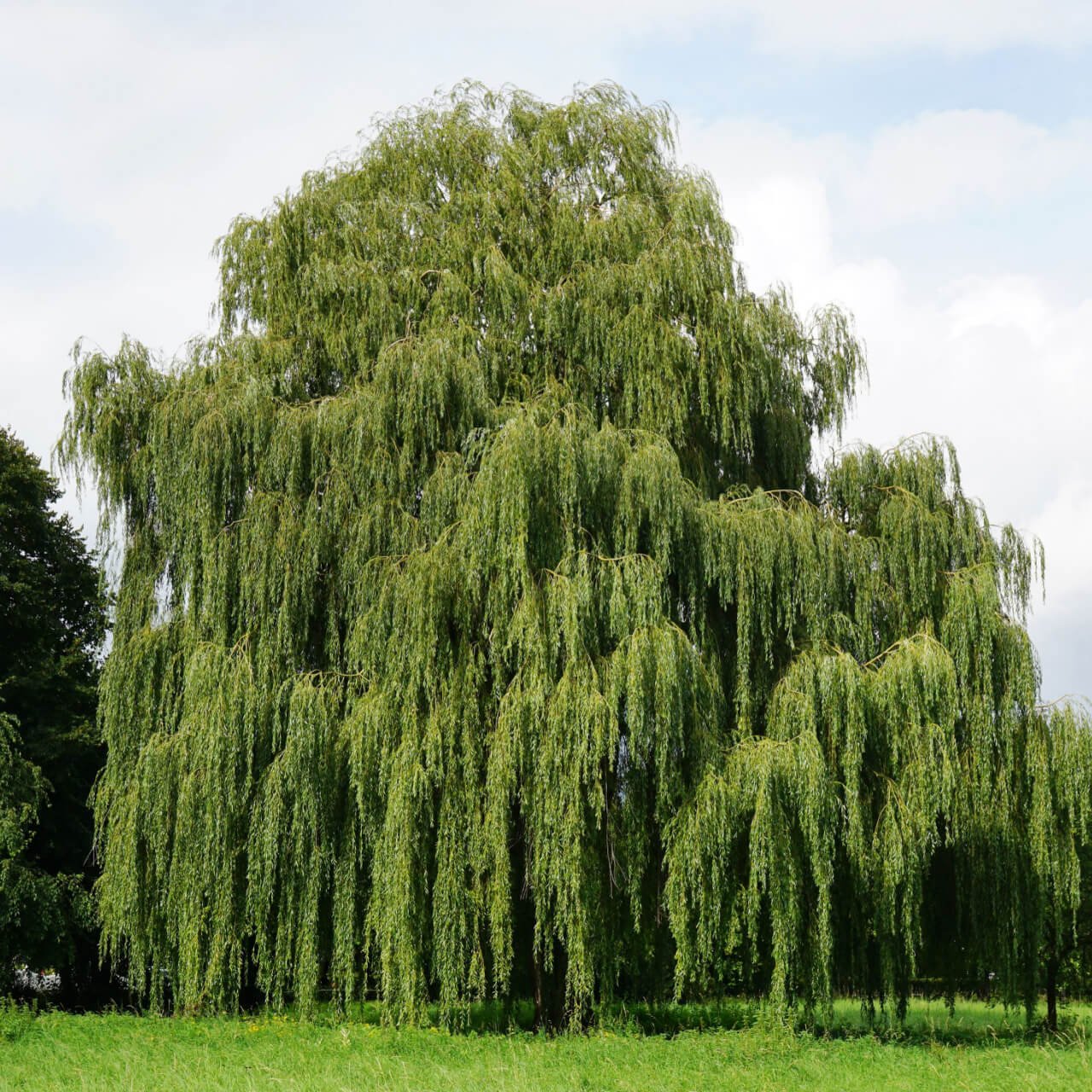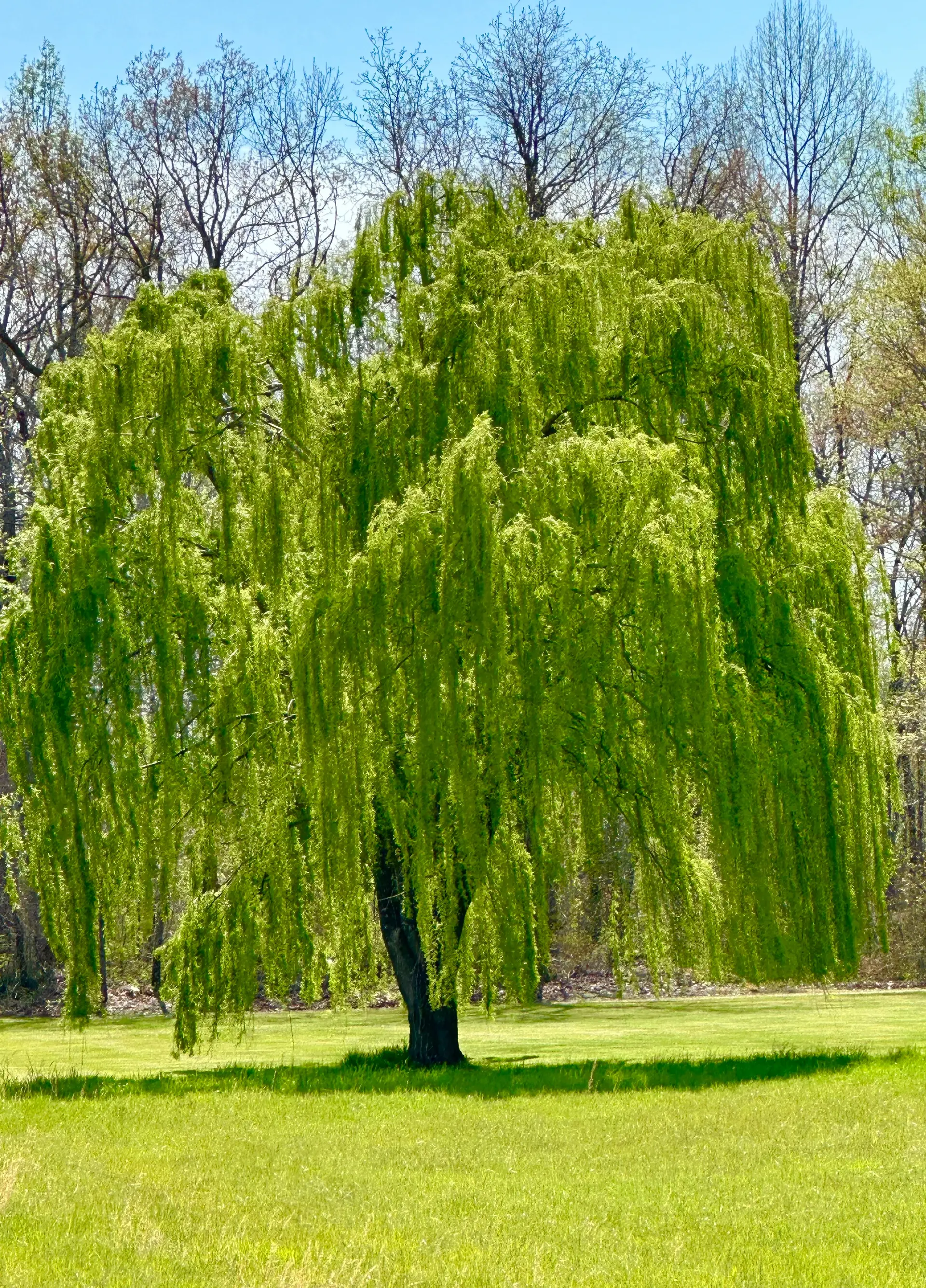



Weeping Willow
Elegant, graceful tree with unique form
Excellent for creating serene landscapes
Great for providing natural privacy screen
Thrives in
ZONE 4ZONE 5ZONE 6ZONE 7ZONE 8ZONE 9This plant ships:
November 20251 Year Guarantee on all plants
Weeping Willow - Salix babylonica
Weeping Willow (Salix babylonica) is a traditional ornamental plant that is a necessity for a more classical garden.
Plant Details - Weeping Willow
Family: Salicaceae
Light Requirement: Full Sun
Water Needs: Moist
Height: 30 - 40 ft.
Spread: 30 – 40 ft.
Growth Rate: Fast
Bloom Time: Winter
Flower Color: Red
Wildlife Value: Attracts bees, butterflies, birds
Landscape Uses and Maintenance – Weeping Willow
Weeping Willow has long, draping branches with flowing green leaves. Branches hang downwards and gracefully reach the ground. Create a relaxing scene at your home or in your landscape.
Plant this statuesque tree near water, as in a pond or the edge of the stream, for a characteristically beautiful landscape. Images come to mind of sweeping, evocative pastoral scenes. Add to your garden to create a calming moment of tranquility.
Sunny days are a must! This tree requires full sun. Do not plant in shade; this plant can be susceptible to fungal issues that will proliferate in the shade.
This tree will thrive in moist, well draining soil. You can plant it in a variety of soils, including clay, sand, or loam.
This tree will get tiny flowers (catkins) that will bloom in winter. The catkins are yellow and will attract early pollinators.
After the initial planting and growing season, this is a low maintenance tree that will require little active maintenance. When first planted it will need plenty of water – this tree loves water! Make sure to water your tree during extended dry periods as well.
Prune damaged or diseased branches from your tree as it matures. Prune off any of the branches that begin to grow upwards instead of down to maintain the weeping habit.
Add a layer of compost or humus around the base of the tree to give more organic material. You can fertilize once a season with a balanced fertilizer, but applying fertilizer is not necessary to the growth of this plant.
Noteworthy Characteristics
Weeping Willow is a host plant for many butterflies, including the Viceroy Butterfly, Mourning Cloak Butterfly, and Tiger Swallowtail. Plant this tree to have them visit your garden.
This Is How Your Plants Will Look upon Delivery

Height at Maturity
Over 25 Feet
Care
Weeping Willows thrive in moist, well-drained soil. Water regularly to maintain the soil's moistness. Prune in winter or early spring to release dead or damaged branches and maintain shape. Fertilize yearly in early spring with a proportional fertilizer for optimal growth.
Plant Reproduction
Weeping Willow spreads via wind-dispersed seeds and root suckers.
Plant bare root trees during the dormant season in early spring or late fall (November through April). Dig the hole twice as wide as the roots so the soil is well-drained. Position the tree so the root flare is at or just above ground level. Fill the hole back with the soil you dug from and water. Maintain soil moisture, especially in the tree's early years, by providing deep, regular watering. Apply a 2-4 inch mulch away from the trunk at the base to retain moisture and suppress weeds. Prune trees during the first few seasons to establish strength and resilience, remove damaged branches, and continue maintenance pruning as the tree matures. Regularly inspect for pests and diseases and apply integrated pest management practices. Protect young trees from mechanical damage and extreme temperatures with tree guards, and stake them if necessary for support, removing the stakes after one or two years.
Shipping date depends on the date displayed and chosen when you order from the product's page.
We only accept returns on plants verified dead. If you think your plants have died, we offer a 1 year warranty, please use this File a Claim Link to verify dead plants and start with return warranty process.






Elegant Cascading Branches:
Weeping Willow’s gracefully draping branches create a stunning, serene focal point in any garden.
Rapid Growth:
This tree grows quickly, providing fast results and immediate impact in your landscape design.
Shade and Privacy:
Its broad, weeping canopy offers excellent shade and natural privacy, perfect for creating a secluded retreat.
Low Maintenance:
Adaptable to various soil types and conditions, the Weeping Willow requires minimal care, making it a hassle-free addition.
Caring Tips
How do I care for my Weeping Willow?
Each box contains detailed care instructions and information about your product. But here's the basics.
Care Tips
Weeping Willows thrive in moist, well-drained soil. Water regularly to maintain the soil's moistness. Prune in winter or early spring to release dead or damaged branches and maintain shape. Fertilize yearly in early spring with a proportional fertilizer for optimal growth.
Light Requirements
Weeping Willow trees thrive in complete sun to little shade, needing at least 4-6 hours of natural sunlight daily. They grow best in bright, open areas but can handle some light shade, particularly in hotter climates.
Hardy Planting Zones
4 • 5 • 6 • 7 • 8 • 9
Header
Use this content to share information about your store and products.
Frequently Asked Questions
How often should I water my plants?
How do I know if my plant is getting too much or too little sunlight?
What should I do to prepare my plants for winter?
What are the signs that my plant needs fertilizing?
How can I prevent pests from damaging my plants?
How do I choose the right plant for my climate zone?






